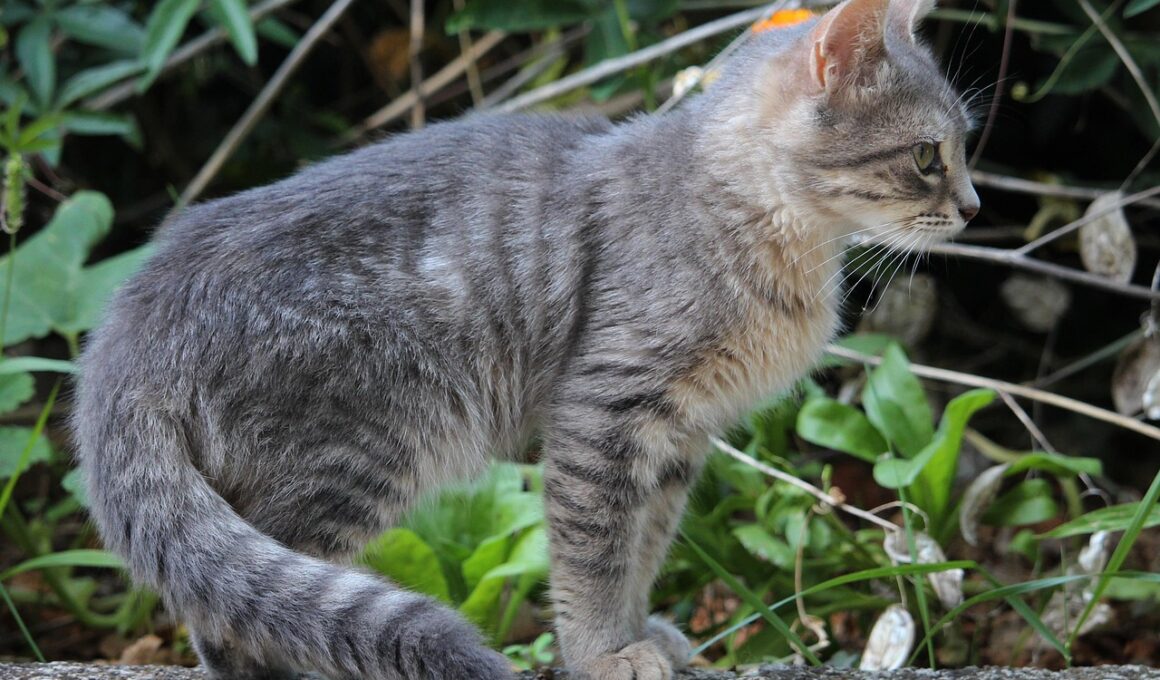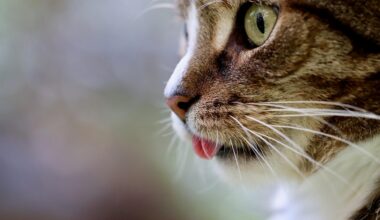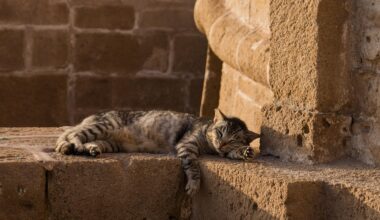Preventing Matting in Long-Haired Kittens
Long-haired kittens are undeniably adorable, but they require extra attention when it comes to grooming. One of the most common issues cat owners face is matting. Matting can occur when fur becomes tangled, locking in dirt and oils, and leading to skin irritation. To minimize the chances of mats developing, it is essential to establish a regular grooming routine. For optimal grooming, investing in quality tools is vital. A slicker brush or a comb specifically designed for long-haired breeds can do wonders. Regular grooming can also help enhance the bond between you and your feline friend. Start with a gentle approach, using soft strokes to get the kitten accustomed to the process. Always be patient, as some kittens might be initially anxious about being groomed. Assure them with soft words and treats. It can also be helpful to groom them in a comfortable space where they feel secure. Additionally, brushing them at the same time each day can create a calming routine, making them more accepting of handling. In this way, preventing mats becomes an easier task for every devoted kitten owner.
Understanding the signs of matting is crucial in maintaining your kitten’s coat. Matting often appears as clumps or tangles in the fur, especially in areas such as behind the ears, under the legs, or around the collar. If you notice your kitten starting to develop mats, it is crucial to take action right away. When mats are left unattended, they can turn into larger issues, causing pain or skin infections. Regularly checking your kitten’s coat will allow you to catch mats before they worsen. Focus on sensitive areas prone to matting, as these areas require extra scrutiny. Keeping an eye on your kitten while they groom themselves can also help prevent mats. Kittens sometimes miss spots, which can lead to knots forming. If your kitten does have mats, it’s best to avoid cutting them out. Instead, use a detangling solution specifically designed for pets, which can help ease the process. Apply it gently, and work through knots with your fingers or with the slicker brush. Remember, grooming should be a positive experience for your kitten, so take your time to ensure they remain calm and comfortable.
Choosing the Right Grooming Tools
When it comes to preventing matting, using the right grooming tools is critical. Some basic grooming essentials include a suitable brush, comb, and scissors. A wide-toothed comb can help work through tangles without pulling on their delicate fur. It’s recommended to use a slicker brush for long-haired kittens, as it can remove loose hairs while preventing tangles. Additionally, consider investing in a de-shedding tool if your kitten gets shedding fur all over your home. Always choose tools specifically designed for pets to ensure that they are gentle and effective. You may even want to consider a grooming glove for a more hands-on experience, as it allows you to pet and groom your kitten simultaneously. Regularly cleaning these tools can also enhance their effectiveness and longevity. After each grooming session, take a moment to wash your brushes and combs. This habit keeps them free from dead fur and dirt, promoting a healthy grooming regimen. Lastly, make sure that the tools you select are appropriate for the specific breed of your kitten. Each breed may have different grooming needs that should be addressed effectively.
Creating a positive environment during grooming sessions is essential for your kitten’s comfort. Start by finding a quiet, safe space where your kitten can relax. Setting the scene can involve soft lighting and a comfortable surface, such as a padded blanket or a non-slippery mat. It’s important that your kitten feels secure. You can also use treats to reward them during the grooming process. This positive reinforcement will make them associate brushing with good experiences. Take breaks during longer grooming sessions to let your kitten wander if they feel restless. Always check in between and after grooming to see how they respond. Some kittens enjoy stimulating play with toys, so having them nearby can alleviate boredom and anxiety. Consider turning on soft music or calming sounds to create a soothing atmosphere. Patience is key; if your kitten shows signs of stress, take a step back and allow them to come to you. Maintaining a calm demeanor and being gentle will help develop trust and acceptance towards grooming. That relationship will ensure the bond and love between you and your kitten continues to grow.
The Importance of Early Grooming
Introducing grooming early in your kitten’s life can make a significant difference in how they handle it as adults. Starting young helps instill good habits and can prevent fussiness in the future. Kittens might usually be more receptive and less anxious if they are accustomed to grooming from a young age. It’s all about making the experience enjoyable, as young kittens learn quickly through repetition. Start by brushing for short periods, gradually increasing the time as they become more comfortable. Keeping sessions brief but consistent aids in establishing a routine that your kitten can become accustomed to. Additionally, during these grooming sessions, use treats and praise to associate positive feelings. This creates a healthy grooming relationship, which will serve them well throughout their lives. Furthermore, early exposure to grooming prepares your kitten for regular vet visits. It can help them feel more relaxed when they encounter similar handling situations later. The goal is not just to prevent matting but to develop a trusting bond with your kitten to keep them happy, healthy, and confident. These early steps can enhance their lives remarkably.
Feeding your kitten a balanced diet can greatly contribute to maintaining their coat health. Quality nutrition is vital for promoting healthy skin and fur, minimizing shedding, and reducing matting. Focus on providing food that contains high-quality proteins, vitamins, and minerals. Ingredients like Omega-3 and Omega-6 fatty acids are beneficial as they help keep the skin moisturized and prevent friction that leads to mats. You may want to consider incorporating a supplement specifically designed for furry companions if your kitten needs it. Always consult with your veterinarian before adjusting their diet, as they can recommend what’s best based on your kitten’s breed and health needs. Food choices impact more than appearance; they play a crucial role in overall well-being. Maintaining a healthy weight for your kitten is equally important, as this can affect their grooming habits and the ability to access all body areas effectively. Keeping your kitten hydrated is also essential, as water is crucial for a healthy coat. Encourage them to drink plenty of fresh water daily to support their overall health and grooming needs. Informed choices about diet will lead to positive outcomes for your kitten.
Conclusion
In conclusion, grooming long-haired kittens effectively requires time, effort, and the right approach. By combining quality grooming tools, early introductions to grooming sessions, and a nutritious diet, you can successfully prevent matting. Always remain patient and attentive to your kitten’s comfort. Regular grooming not only promotes coat health but enhances the bond between you two. It’s a wonderful opportunity for connection, relaxation, and camaraderie. If mats do develop, act quickly to resolve them with care to ensure your kitten’s well-being. Keep in mind that every kitten is different, and adapting your techniques will allow you to cater to their needs. The love and attention you provide will definitely create a safe and loving environment. Ensuring that grooming occurs regularly leads to happier kittens and satisfied owners. Continue educating yourself on kitten care, as ongoing learning enhances your ability to provide the best for your furry friend. Remember that your efforts will result in a beautiful, healthy kitten that thrives throughout their lives. Embrace the journey together; it’s one of love, care, and countless moments of joy.


